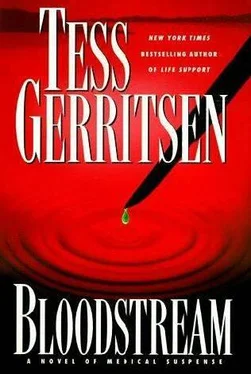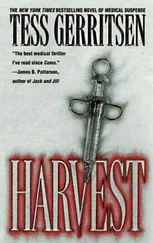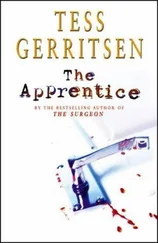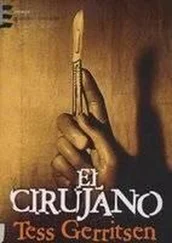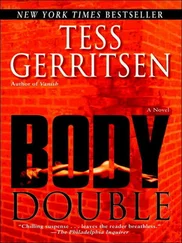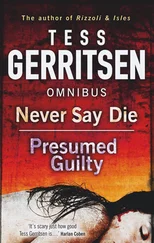“You’re right, it isn’t. But I don’t worry about that particular asymmetry because it doesn’t involve the brain. It’s in one of the bony sinuses.”
“What are you looking at?” asked the tech.
“The right maxillary sinus. You see? It’s not completely lucent. There seems to be something clouding it.”
“A mucoid cyst, I’d guess,” said the tech. “We see that sometimes in patients with chronic allergies.”
“It certainly wouldn’t explain his behavior,” said Claire.
The phone rang. It was Anthony, calling from the lab.
“You might want to come down and look at this, Dr. Elliot,” he said. “It’s the gas chromatogram on your patient.”
“Has something shown up in his blood?”
“I’m not sure.”
“Explain this test to me,” said Lincoln. “What are you measuring here?”
Anthony patted the boxlike gas chromatograph and grinned like a proud father.
The tabletop instrument was a recent acquisition, a valuable hand-me-down from Eastern Maine Medical Center in Bangor, and he hovered over it protectively.
“What this piece of equipment does,” he explained, “is separate mixtures into their individual components. It does this by making use of each molecule’s known equilibrium between the liquid phase and the gas phase. You remember high school chemistry?”
“It wasn’t my favorite subject,” Lincoln admitted.
“Well, every substance can exist either as a liquid or a gas. For instance, if you heat water, you make steam-which is the gas phase of H-two-oh.”
“Okay, I’m following you.”
“Coiled inside this machine is a capillary column-a very long, very thin tube that, if you laid it out straight, would stretch about half the length of a football field. It’s filled with an inert gas that won’t react with anything.
Now, what I do is inject the sample to be tested into this port here. It gets heated and vaporized to gas, and the different types of molecules travel along that tube at different rates of speed, depending on their mass. That separates them. As they come out the other end of the tube, they pass through a detector and it’s recorded on a strip-chart. The time it takes for each substance to emerge is called ‘retention time.’ We already know the retention times for hundreds of different drugs and toxins. This test clues us in to the presence of a particular substance in a patient’s blood.” He picked up a syringe and screwed it into the port. “Watch the screen. See what happens when I inject the patient’s sample.” Anthony squeezed down on the syringe.
On the computer screen, an uneven line appeared. They watched the tracing for a moment, but it only looked like “noise” to Claire- minor, nonspecific readings indicating the biochemical soup that makes up human plasma.
“Just be patient,” said Anthony. “It shows up at about one minute, ten seconds.”
“What does?” asked Claire.
He pointed to the screen. “That?’
Claire stared as the line suddenly shot up to a peak and promptly dropped back down again to the uneven baseline. “What was that?” she asked.
Anthony went to the printer, where a hard copy was being simultaneously recorded on paper. He tore off the sheet and spread it out on the lab counter for Claire and Lincoln to see.
“That peak,” he said, “is something I can’t identify. The retention time places it in the steroid class, but you can also see a similar peak for certain vitamins and endogenous testosterone. It’d take a more sophisticated lab to identify exactly what this is.”
“You mentioned endogenous testosterones,” said Claire. “Could this be an anabolic steroid? Something a teenage boy might abuse?” She looked at Lincoln.
“It would explain the symptoms. Body builders sometimes use steroids to bulk up their muscle mass. Unfortunately it has side effects, one of them being uncontrollable aggression. They call it ‘roid rage.”
“It’s something to consider,” said Anthony. “Some sort of anabolic steroid. Now look at this.” He went to his desk and retrieved another sheet of graph paper.
“What is it?”
“It’s Taylor Darnell’s gas chromatogram, taken the day he was admitted.” He lay the second sheet next to Scotty Braxton’s tracing.
The pattern was identical. A single, well-defined peak at one minute, ten seconds.
“Whatever this substance is,” said Anthony, “it’s in the blood of both boys.”
“The comprehensive drug screen on Taylor’s blood was reported negative.”
“Yeah, I called the reference lab about that. They questioned our results. As if I’m imagining this peak or something. I admit, this is an older machine, but these results are reproducible every time.”
“Who did you talk to?”
“A biochemist at Anson Biologicals.”
Claire looked down at the two graphs, the papers laid out one over the other, the tracings practically superimposed. Two boys with the same bizarre behavior.
The same unidentifiable substance in their bloodstreams. “Send them Scotty Braxton’s blood,” she said. “I want to know what this peak is.”
Anthony nodded. “I’ve got the requisition right here for you to sign.”
By two A.M., Claire had reviewed every X-ray, every blood test, and was no closer to an answer. In exhaustion she lingered beside the boy’s bed, silently studying her patient. She tried to think of what she might have missed. The lumbar puncture was normal, as were the blood chemistries and EEG. The CT scan had shown only the mucoid cyst in the right maxillary sinus-probably a result of chronic allergies. Allergies would also explain the one abnormality in his white blood cell count: a high percentage of eosinophils. Like Taylor Darnell, she suddenly recalled.
Scotty stirred from his Valium-induced sleep and opened his eyes. A few blinks, and his gaze fixed on Claire.
She turned off the light to leave. Even in the darkness, she could see the gleam of his eyes focused on her.
Then she realized it was not his eyes she saw glowing.
Slowly she crossed back to the bed. She could make out the white linen beneath his head, the darker shape of his head against the pillow. On his upper lip shimmered a brilliant patch of phosphorescent green.
“Sit down, Noah,” said Fern Cornwallis. “There’s something we need to discuss.”
Noah hesitated in the doorway, reluctant to step into the principal’s office.
Enemy territory. He didn’t know why he’d been pulled out of class to see her, but judging by the expression on Miss C.’s face, he suspected it couldn’t be anything good.
The other kids had eyed him with speculative looks when the message had crackled over the intercom in band class: Noah Elliot, Miss Cornwallis wants to see you in her office. Now Acutely aware of everyone’s gaze, he had set down his saxophone and made his way through the maze of chairs and music stands to the door. He knew his classmates were wondering what he’d done wrong.
He had no idea.
“Noah?” said Miss C., pointing to the chair.
He sat down. He didn’t look at her, but at her desk, which was neat beyond belief. No human had a desk like that.
“I received something in the mail today,” she said. “I need to ask you about it.
I don’t know who sent it. But I’m glad they did, because I need to know when one of my students requires extra guidance.”
“I don’t know what you’re talking about, Miss C.”
In answer, she slid a photocopied news clipping across the desk. He took one glance and felt his face blanch. It was from The Baltimore Sun:
ONE YOUTH IN CRITICAL CONDITION AFTER CRASH OF STOLEN CAR: FOUR YOUTHS IN CUSTODY.
Who knew about it? he thought. And, more important: Why are they doing this to me?
Читать дальше
Конец ознакомительного отрывка
Купить книгу
